The ultimate guide to community-led growth
From integrating your CLG strategy with product-led growth to best practices and building a team, here’s everything you need to know about community-led growth.
Overview
Welcome to the era of community-led growth, or CLG. Many of today’s fastest-growing companies, like Atlassian, Asana, Figma, HubSpot, and Webflow, are tapping into the power of community to fuel businesses and build a durable moat.
Savvy business leaders have realized they can no longer treat community as an afterthought. As community consultant Brian Oblinger puts it, “Being community-led means that community is the engine, not a sidecar, of your business.”
If you haven’t already, there’s never been a better time to join the community-led growth movement, as the positive impact of community continues to turn heads. According to the 2022 Community Industry Report, 87% of community professionals believe community is critical to their company’s mission, and 82% say they have seen increased interest in community from other departments.
To help you hit the ground running with community-led growth, we’ve created this guide to answer questions such as:
- What is community-led growth?
- How does community-led growth relate to product-led growth?
- What are the key components of a CLG strategy?
- What are the best practices for community-led growth?
- How should I go about building a community-led growth team?
- Why is community an effective GTM strategy and how do I discuss CLG with the C-suite?
- How can my business get started with a community-led growth platform?
If you're ready to jump right into the conversation on community-led growth, join us in the Uncommon Community Slack where 1,500+ community and DevRel professionals exchange learnings and best practices.
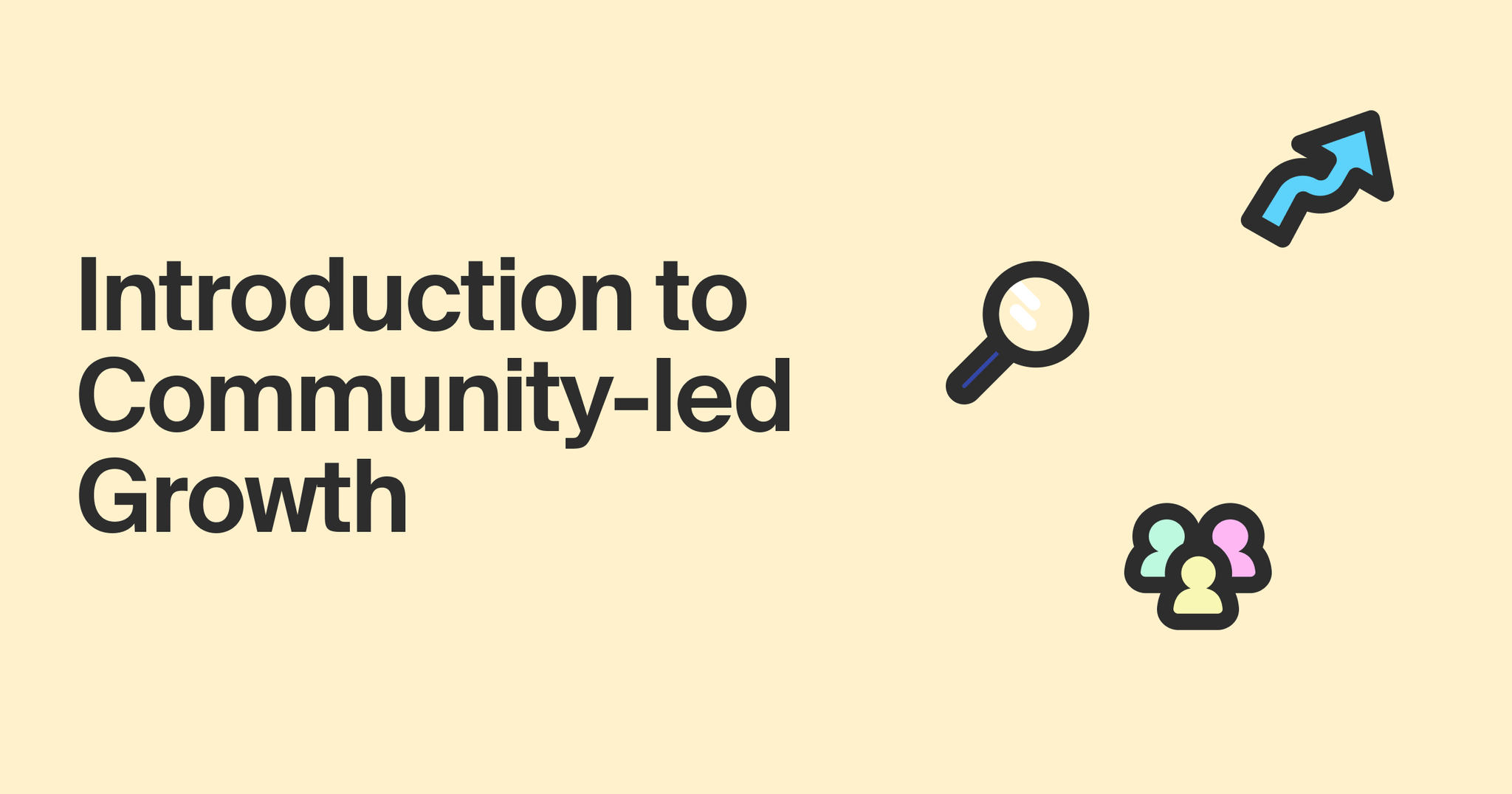
What is community-led growth?
Community-led growth is the process of leveraging community to impact business outcomes, such as increasing customer acquisition, boosting engagement, and improving retention. In the last few years, it has quickly become an integral part of many organizations’ go-to-market strategy.
It’s important to note that CLG is closely related to community growth, but they are not the same thing. Community growth refers to all efforts aimed at building, nurturing, and strengthening a community. Successful community growth powers community-led growth.
Both approaches rely on data for maximum impact. Layering in intelligence from AI and machine learning enables “intelligent community growth,” a strategy that uses data to surface valuable insights to maintain a strong community growth trajectory beyond what a human can achieve manually.
Advanced community-led companies often integrate their business tools and internal company data into their community technology stack to get a clearer picture of the relationship between community growth and community-led growth.
To learn more about community-led growth and why it has been called “the future” check out this article about the defining features of community-led growth and how to get started.
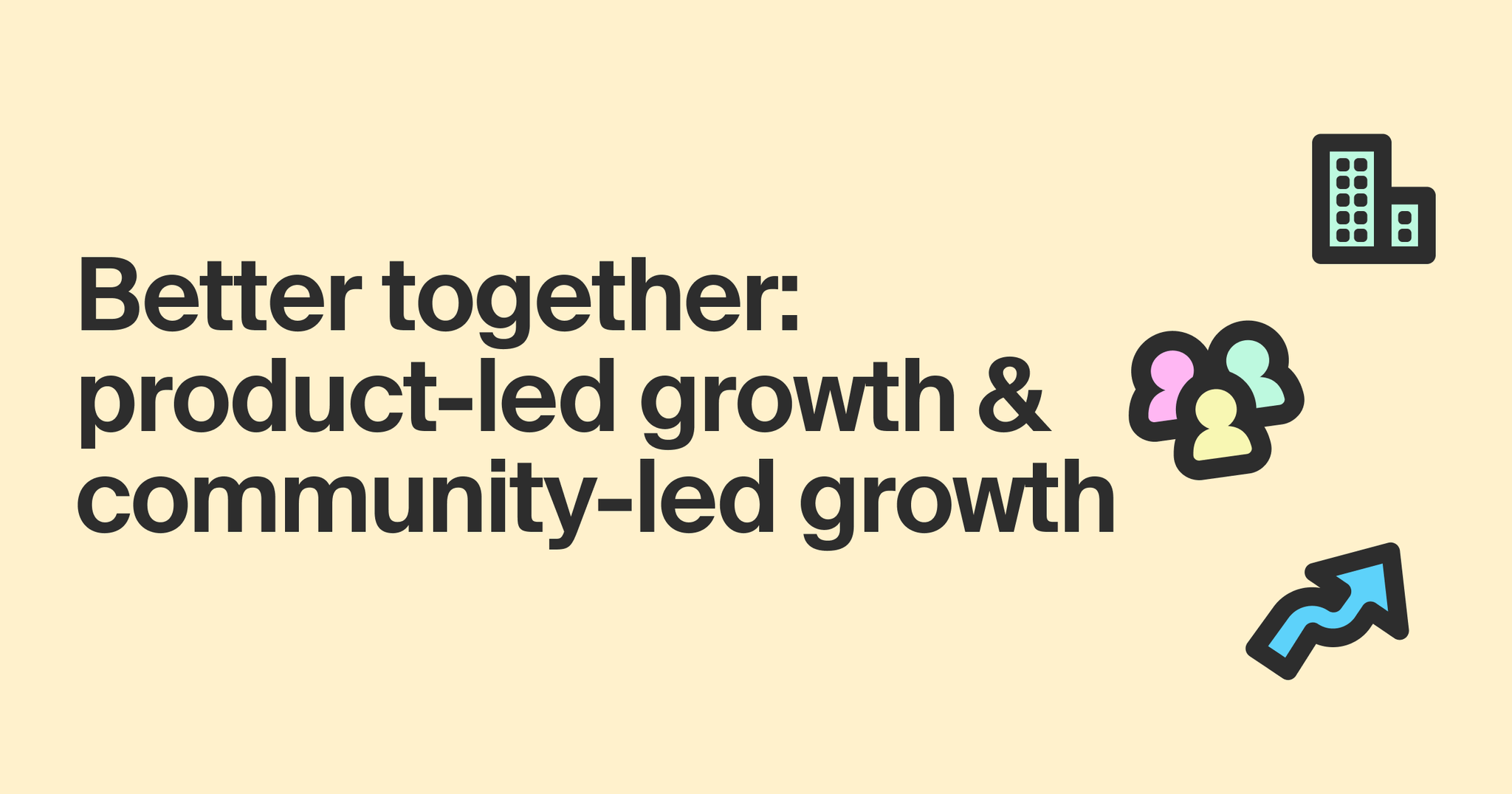
How does community-led growth relate to product-led growth?
Community-led growth often builds on product-led growth, another popular GTM strategy that positions a company’s product as a critical driver of awareness, acquisition, and revenue.
The primary difference between product-led growth and community-led growth is that PLG builds from the solution, while CLG builds from the user. Here are some key ways this difference manifests:
Audience vs. community
In PLG, people who decide to try the product comprise an audience of users who can be marketed or sold to as prospective customers of a paid solution. While very important, this audience has little opportunity to contribute to a larger conversation around your product (without a community).
In community-led growth, people are encouraged to join a community where they are welcomed as members whose presence, expertise, and contributions add shared value to all users—which in turn brings benefits to the business.
User feedback
With a PLG-only model, audiences will leave feedback across a variety of channels like social media, software review sites, and more. However, the responsibility of gathering and synthesizing this information may be fragmented across marketing, customer success, and/or product teams, which means key insights can get lost in the mix and users left feeling unheard.
When community-led growth supplements PLG, feedback is shared organically through conversations among community members. A community team using a community-led growth platform can easily capture, categorize, and triage this information to identify insights that inform stakeholders across the organization, from marketing and customer success teams to product, engineering, and support teams.
Performance metrics
A common North Star metric for PLG companies is product qualified leads (PQLs), users who have actively engaged with the product, demonstrating high intent and signaling they are likely to receive value from a sales conversation to convert or upsell.
Community-led growth companies looking to demonstrate the bottom-line impact of community will often measure community-attributed revenue (CAR), or revenue that can be tied to an organization whose member(s) engaged in the community before they appeared in a CRM.
Ownership
In PLG, specific teams are more heavily involved in different stages of the funnel. The marketing team is responsible for attracting leads to the free version of the product, which the product team has designed to demonstrate value and hook the user. Then the sales team often steps in to convert those leads into customers, who will then interact with the customer success team, and so on.
When community-led growth is integrated with PLG, the responsibility of attracting leads is more equally distributed across the organization. While community managers are often primarily responsible for engaging, anyone across the organization can have authentic interactions with community members. When cross-functional teams engage with the community, members are able to interact with the product and business in more meaningful and enduring ways.
As you can tell, product-led growth and community-led growth are not either/or but rather better together. Many of today’s most successful B2B companies currently use a PLG + CLG strategy, such as Figma, Asana, and dbt Labs. Some of the key ways that CLG can enhance PLG initiatives include enabling teams to:
- Surface contextual and timely community insights
- Build strong long-lasting relationships with customers
- Inform product prioritization and development
- Improve the customer experience
- Connect business data and community data
Check out this article for more information on how product-led growth and community-led growth compare and contrast.
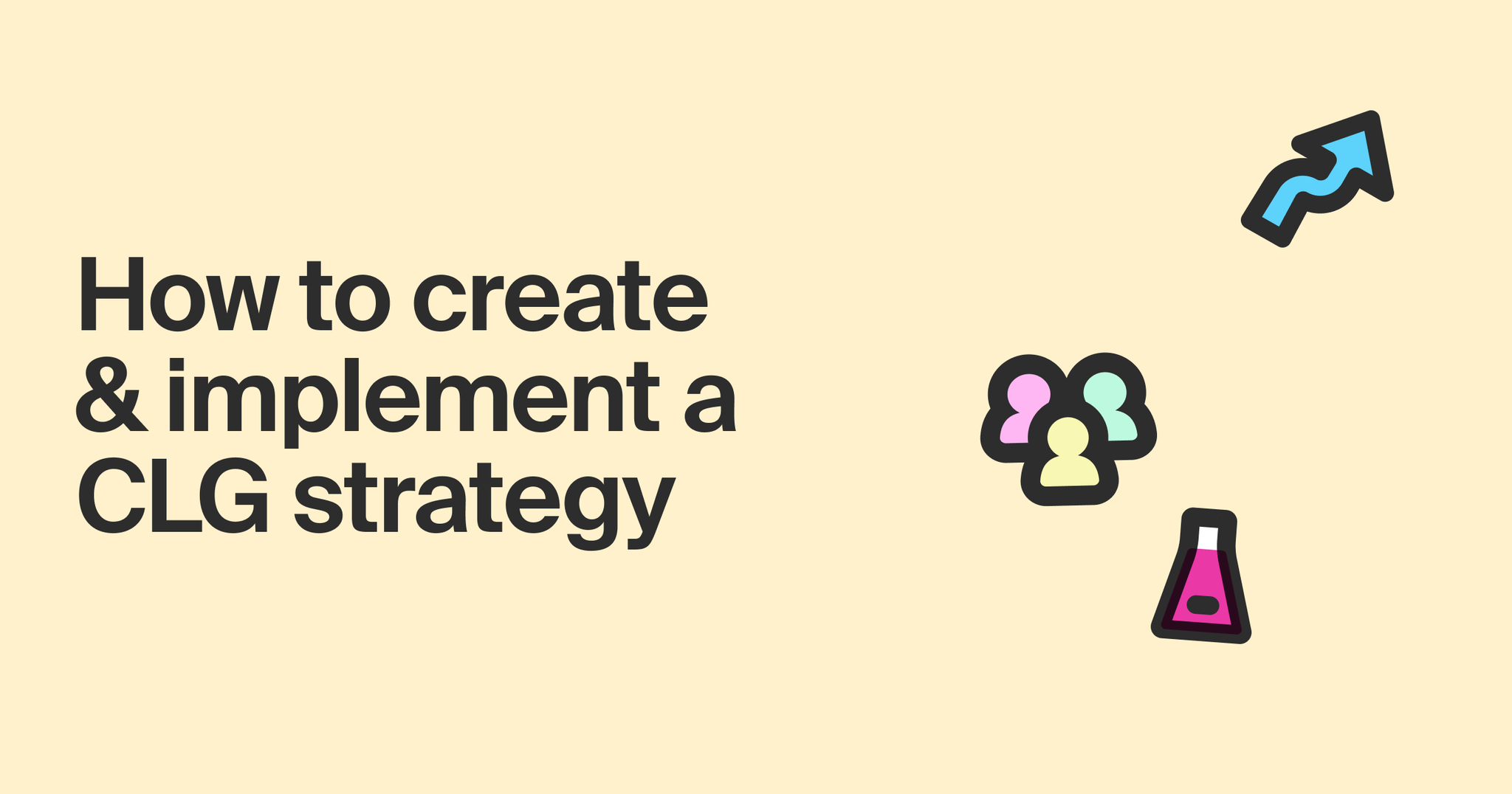
What are the key components of a community-led growth strategy?
A community-led growth strategy is a go-to-market model that focuses on creating, nurturing, and growing a community of users to improve customer acquisition, retention, and satisfaction. For example, Asana uses a community-led growth strategy to successfully deepen relationships between members and the company, surface valuable user feedback, and increase product adoption through education and engagement.
Here are some of the must-have components that you should ensure are included in your community-led growth strategy:
- An active online community is a baseline requirement for your CLG strategy. Community should be a place where members feel like they are engaging with their peers and gaining value, rather than being marketed or sold to.
- Choosing the right community-centric channels and platforms largely depends on your industry and the type of community you are building. For example, a community of practice for developers might prioritize channels like Discord and Reddit, whereas a community of product for a copywriting tool could focus on Slack and Twitter.
- Creating and distributing consistent, high-value content is one of the best ways to show value to members—namely, that they will benefit and learn from being a part of the community. Valuable content can be anything from comprehensive articles filled with best practices to conversation starters that prompt members to weigh in and offer their own tips and guidance to pointers to other industry resources or networking opportunities.
- A strong CLG team is essential because they are the ones who will be implementing the strategy, measuring its success, and making adjustments accordingly. Take a look at the section below for details on how to build a powerful community-led growth team by getting buy-in from across your organization.
- Your CLG strategy should ultimately result in a community flywheel, which refers to the compounding positive effect of community growth on business growth (and vice versa). Members join the community, engage with each other, learn more about why they should adopt the product or how they can enhance their usage, and then become champions whose advocacy prompts even more people to join the community.
- The CLG team must set KPIs and North Star metrics in order to measure the success of your strategy and the impact that community growth is having on the business. There are two primary categories of metrics to draw from when selecting your community-led growth KPIs: community health metrics and business impact metrics.
To learn more about the nuances of effective CLG strategy, check out this article on assembling a strategy for community-led growth.
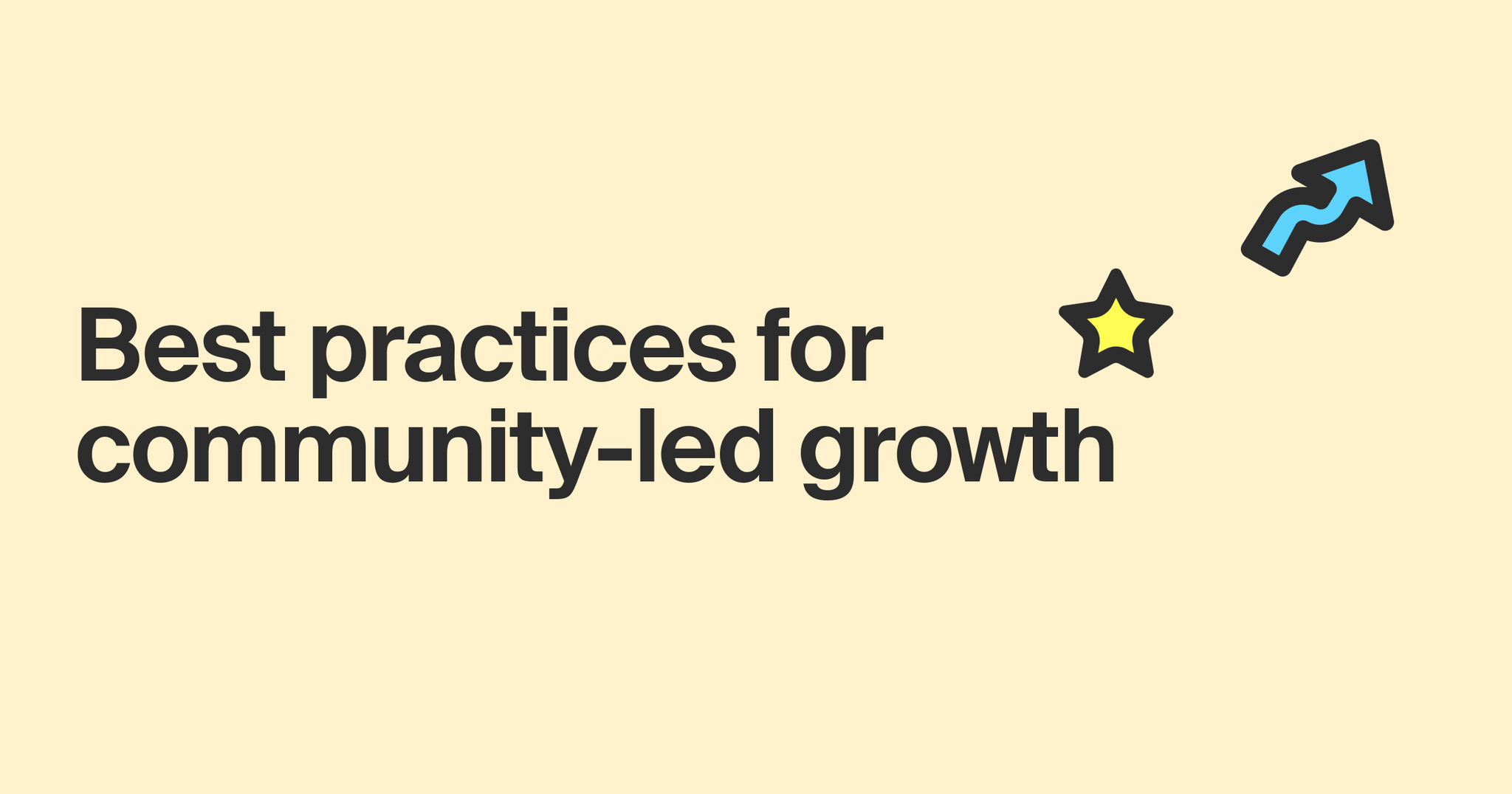
What are best practices for community-led growth?
While your exact community-led growth strategy and execution steps will depend on your company’s industry, size, and business goals, there are some time-tested best practices to bear in mind when developing your plan. These include:
- Finding your community: For companies just getting started with community, this involves developing a space where members can connect, exchange ideas, and network in the way that they want to.
- Support your members: This entails implementing a code of conduct to ensure your community becomes—and remains—a safe and valuable place for members. Key components include your community purpose, value and guidelines, and putting enforcement mechanisms in place.
- Put your community at the center: While community can be a powerful way to acquire new users, retain existing customers, and create advocates, it’s important to note that your product and business outcomes should not be the number one focus. By putting your members’ wants and needs at the center of everything you do, you will create a happy, engaged community that will be predisposed to trying your product or remaining a long-term customer.
- Prioritize member-to-member interactions: Making members feel comfortable replying, direct messaging, and asking questions is key to creating a self-sustaining community. Forming new relationships is one of the biggest value-adds of joining a community, so it’s important that members are encouraged to interact with each other.
- Recognize your champions: Make sure you acknowledge and reward your champions and prolific contributors who go above and beyond to share helpful resources with the community and help others use the product to its fullest potential. This might entail public shout outs, sending them swag, or establishing a formal ambassador program that involves exclusive product access and/or speaking opportunities.
- Measure your community: While it is possible to aggregate community data from different sources on your own and perform analysis, many communities do not have a dedicated data scientist or firm to outsource this to. That’s why we highly recommend using an intelligent community-led growth platform like Common Room to automatically surface the most valuable insights across all of your community channels like Slack, Discord, LinkedIn, Reddit, and more.
- Reinvest in your community: Tracking and achieving KPI goals isn’t the be-all and end-all of your community-led growth efforts. To continue growing—and receiving value from—your community, it’s important to use insights and analytics to inform what additional programs you will build to nurture that community. Every success should act as a stepping stone to an even stronger community.
Take a deep dive into the best practices for community-led growth.
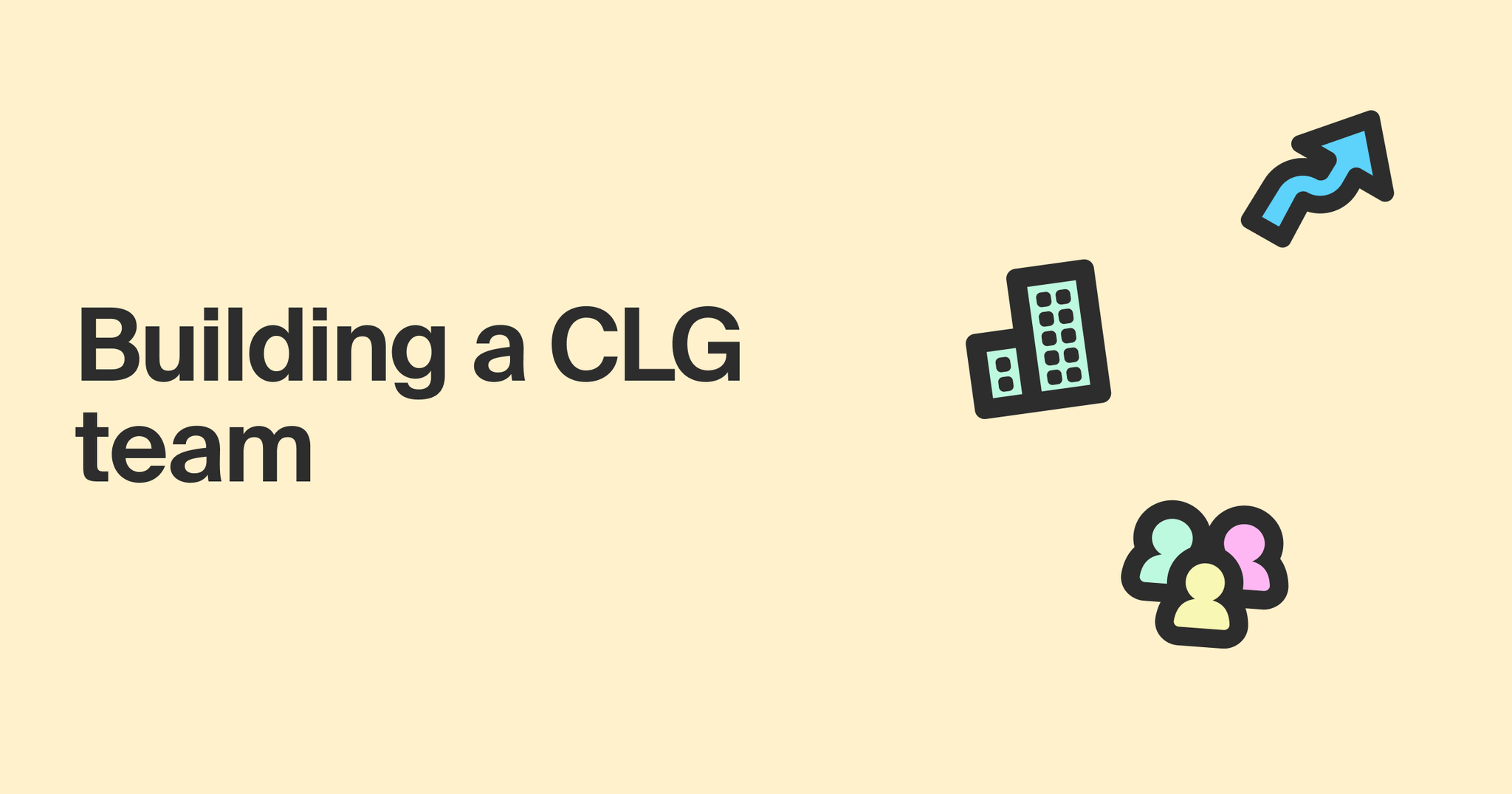
How should I go about building a community-led growth team?
Community-led growth is a cross-functional effort that requires skills from—and provides benefits to—different parts of the organization. Depending on your business, community, and shared goals, consider the following people and teams to participate in your CLG strategy:
- Community managers, heads of community, and community operations are in charge of running the company’s community program and therefore are a fundamental part of the community-led growth team. They often play “quarterback” and oversee a range of responsibilities from representing the voice of the community internally to routing insights to the right roles across sales, customer success, product, support, and more.
- Developer advocates are especially important in software companies, as they have their finger on the pulse of what technical community members want and possess deep insight into what drives bottom-up product adoption.
- Marketing leaders offer a crucial perspective to a community-led growth team because they understand the messages that should be amplified through the community, as well as the areas of education that users frequently need.
- Product leaders have the skills needed to transform community insights into a stronger product at the heart of a PLG + CLG strategy.
- Sales leaders have a wealth of knowledge about the messages that resonate with buyers as well as the nuances and timing of nurturing a prospect down the funnel.
- Customer success leaders deeply understand customers’ pain points and what they desire in an ideal customer experience.
- Executive-level leaders provide important context about what the business needs out of community-led growth efforts, plus they have the authority to allocate additional resources to help fuel CLG.
For more guidance on how to find the right people for the job, read this tactical walkthrough on how to build a community-led growth team.
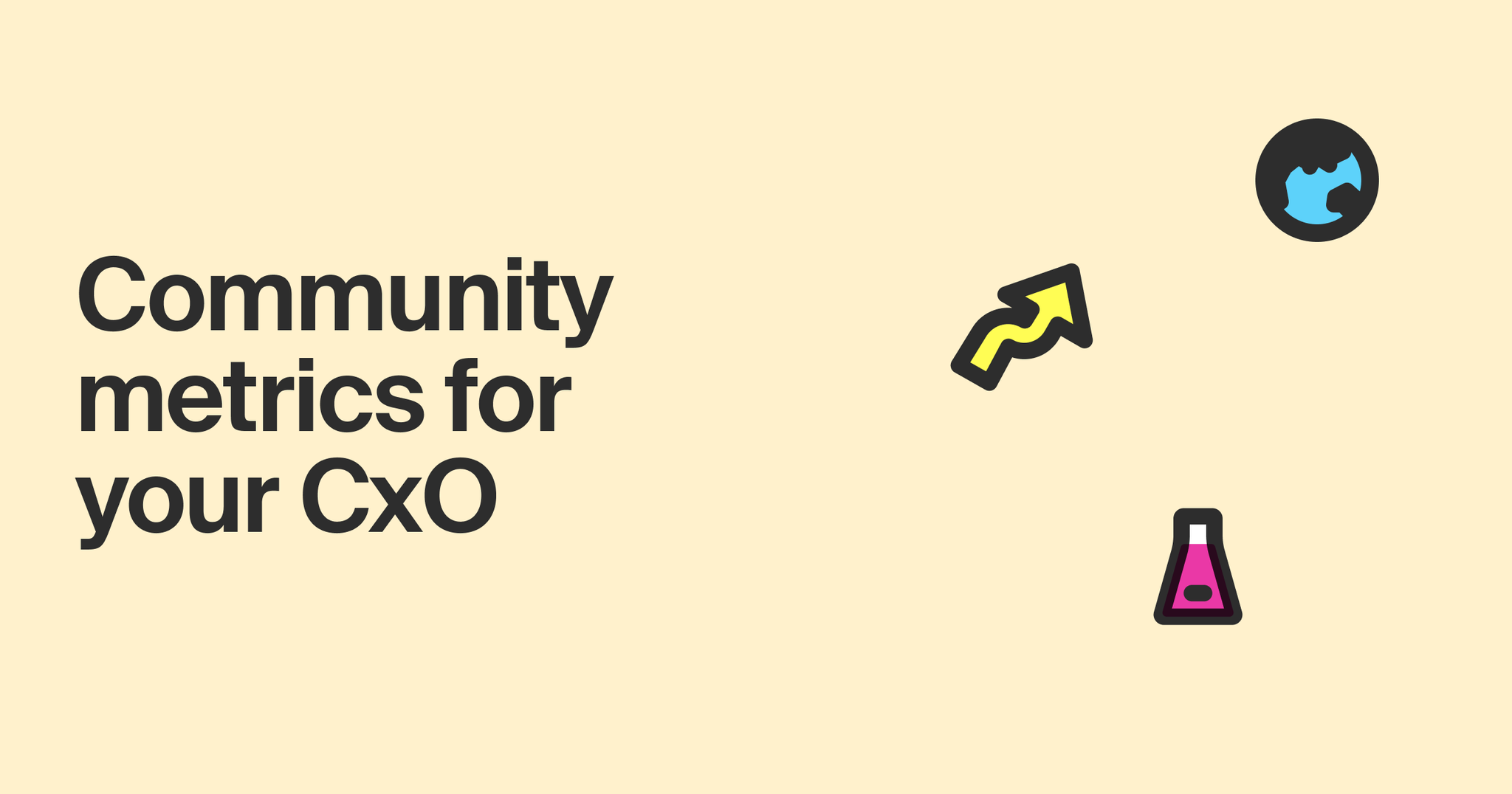
Why is community an effective GTM strategy and how do I discuss community-led growth with the C-suite?
Some businesses still operate with an outmoded view of community. They (falsely) believe that community is a slow-growth strategy that takes too long to establish and nurture before seeing value.
In reality, community’s ability to magnify the impact of other GTM initiatives can lead to both immediate results as well as long-term, sustainable growth. Here are a few examples of the ways community can add value across your GTM strategy:
- Lead generation: Your community is a treasure trove of potential prospects. Look to community signals to help you discover net-new leads that are more likely to convert into sales opportunities. In an open source community, for instance, a surge of new members and chatter from a single organization presents a strong signal that they may be ready to discuss a more feature-rich solution.
- Expansion opportunities: Similarly, listening to your community is a powerful way to discover expansion opportunities through upsell or cross-sell efforts. For example, engagement around a particular topic by a member or organization can be a sign that they are ready for a sales conversation.
- Enrich sales conversations and accelerate cycles: Growing a community provides a consistent pipeline of insights about what your members and ideal customers truly care about. This information enhances lead scoring and helps the sales team reach out at the right time and with the appropriate context, contributing to a faster sales cycle as reps will already know the customer's pain points and the offerings that would most appeal to them.
- Decrease customer churn: It’s no secret that churn is one of the biggest growth killers. Community is a reliable place to look for churn indicators to accompany others signals such as email engagement, product activity, and customer service tickets. For example, monitoring the sentiment of messages, social posts, and comments allows companies to better predict churn and intervene to restore customer trust.
- Improve word-of-mouth marketing: Frequent member-to-member communication is a primary trait of a strong community. Through community, GTM teams can leverage the voice of brand champions to accelerate growth. Champions and consistent contributors are also likely to identify new use cases within an existing team and/or connect your solution with new projects, both of which connect to driving expansion.
With a firm understanding of the ways in which community enhances GTM strategy, your community-led growth team should feel empowered to approach the C-suite to discuss community’s impact on business growth. In the future, these conversations may be an avenue for securing more resources or investment in your CLG program.
Here are some key assertions and proof points you should consider bringing to the table as you prepare to talk about community-led growth with an executive-level decision maker:
- The way software is purchased has changed: Gartner predicts that by 2025 80% of B2B software purchases will happen through online channels. Today, customers seek the advice of peers, trusted advisors, and relatable influencers across the community to help them make buying decisions.
- Community contributes to new business: One Common Room customer saw 300+ organizations engage in their community before appearing in their CRM, which resulted in $5MM+ ARR.
- Community accelerates the business: Deals close faster when customers are engaged in the community. One Common Room customer saw 72% of community-led deals close within 90 days, compared to 42% of sales and marketing-led deals.
- Adjacent business metrics are better in organizations with strong communities: Retention, upsells, and product support outcomes are higher, more frequent, and more positive in organizations who actively engage with their communities.
As many executives try to educate themselves about community and the value it provides to the business, the above points will help you communicate the anticipated outcomes of the work your community-led growth team is doing.
Download our guide to having conversations about community metrics with your CxO for more actionable tips on how to discuss community-led growth with the C-suite.
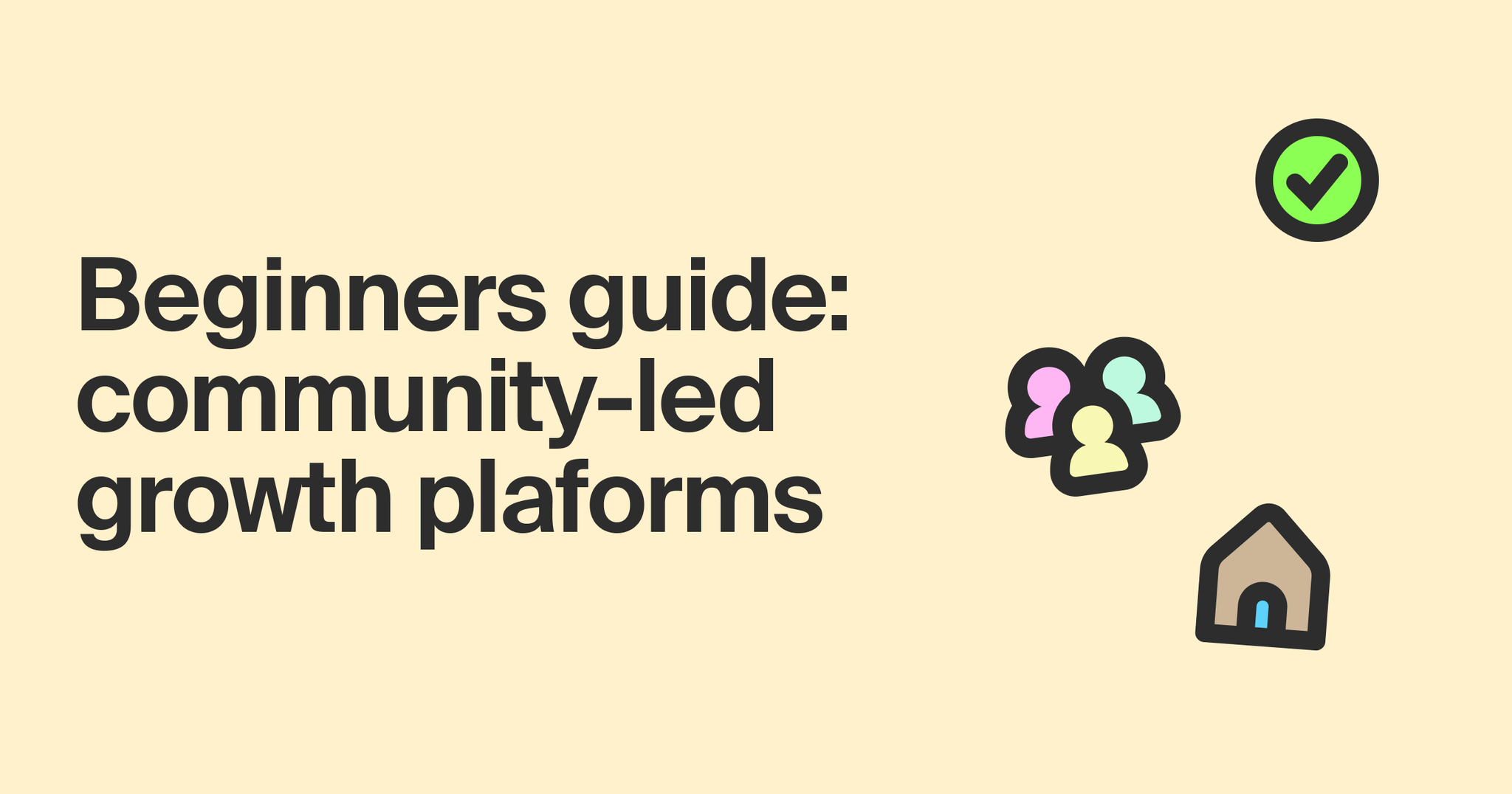
How can my business get started with a community-led growth platform?
A community-led growth platform is a technology that brings together community engagement, product usage, and customer data into a single place. This makes it much easier to deepen relationships within your community, build better products based on feedback, and connect the dots between community activity and key business results.
Here are some top tips for getting started with a community-led growth platform:
- Determine where you are in the three key phases of the community maturity curve
- Phase 1: Seeding the community
- Phase 2: Facilitating growth and sustained engagement
- Phase 3: Show community impact on the business
- Identify your KPIs and North Star metrics to track against over a given business quarter or year, depending on where you are on the community maturity curve. These should entail both community health KPIs (e.g., total membership, engagement rate, average member sentiment) as well as business KPIs (e.g., community-influenced deals, annual recurring revenue, customer retention rate).
- Integrate data sources into your community-led growth platform via plug-and-play integrations to all of your communication apps, social media channels, forums, event platforms, customer success tools, and more.
- Measure performance and adjust goals over time by executing a consistent reporting schedule that allows you to adjust MoM and QoQ goals as baseline metrics are set and new KPIs are added into the mix (or misleading/irrelevant KPIs are scrapped).
To learn more about the benefits of a community-led growth platform and how to use one to its full potential, dive into this article on getting started with a community-led growth platform.
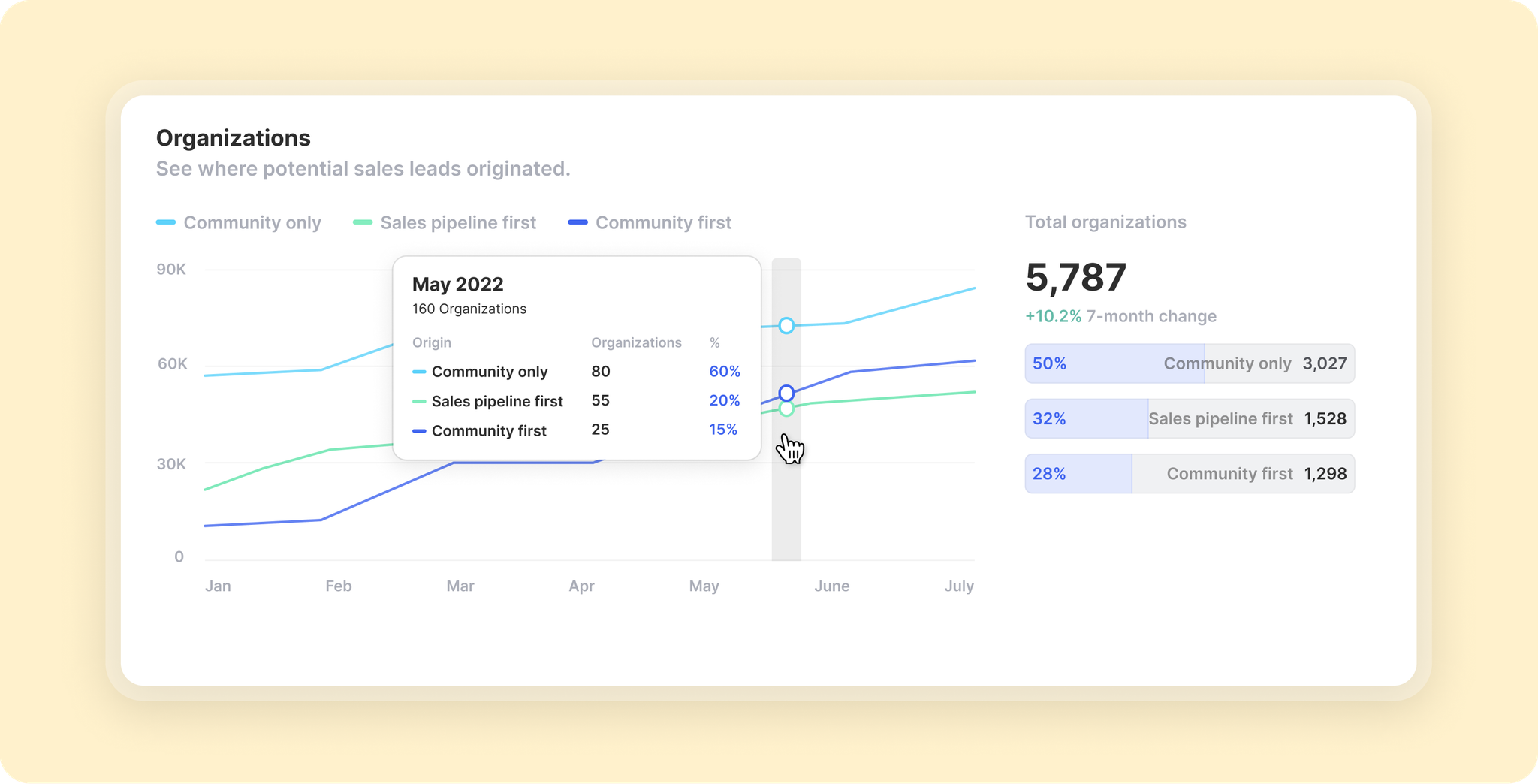
An intelligent approach to community-led growth
An intelligent community-led growth platform makes it easier than ever to proactively engage and grow your community in a way that drives bottom-line results.
Featuring an extensive suite of data integrations, Common Room is the number one way to unite product, customer, and community data together and provide actionable insights across the business to accelerate your community-led growth.
Ready to intelligently engage and grow your community? Try Common Room for free or request a demo.
We think you'd like these
Blog post
A new way to ABM: How we’re fixing sales and marketing misalignment
Jun 5th, 2025·8min readSee how Common Room's customer intelligence platform powers person-level ABM that aligns sales and marketing.Blog post
Bridge the gap between ABM and SQL with Bombora’s Company Surge® in Common Room
May 20th, 2025·5min readSee how Common Room's Bombora integration helps you make ABM actionable across sales and marketing.Blog post
Stop searching calls, start closing deals: Automate action on Gong conversational data with AI agents
Apr 29th, 2025·5min readSee how Common Room's Gong calls integration helps you automate action on conversational insights with AI.